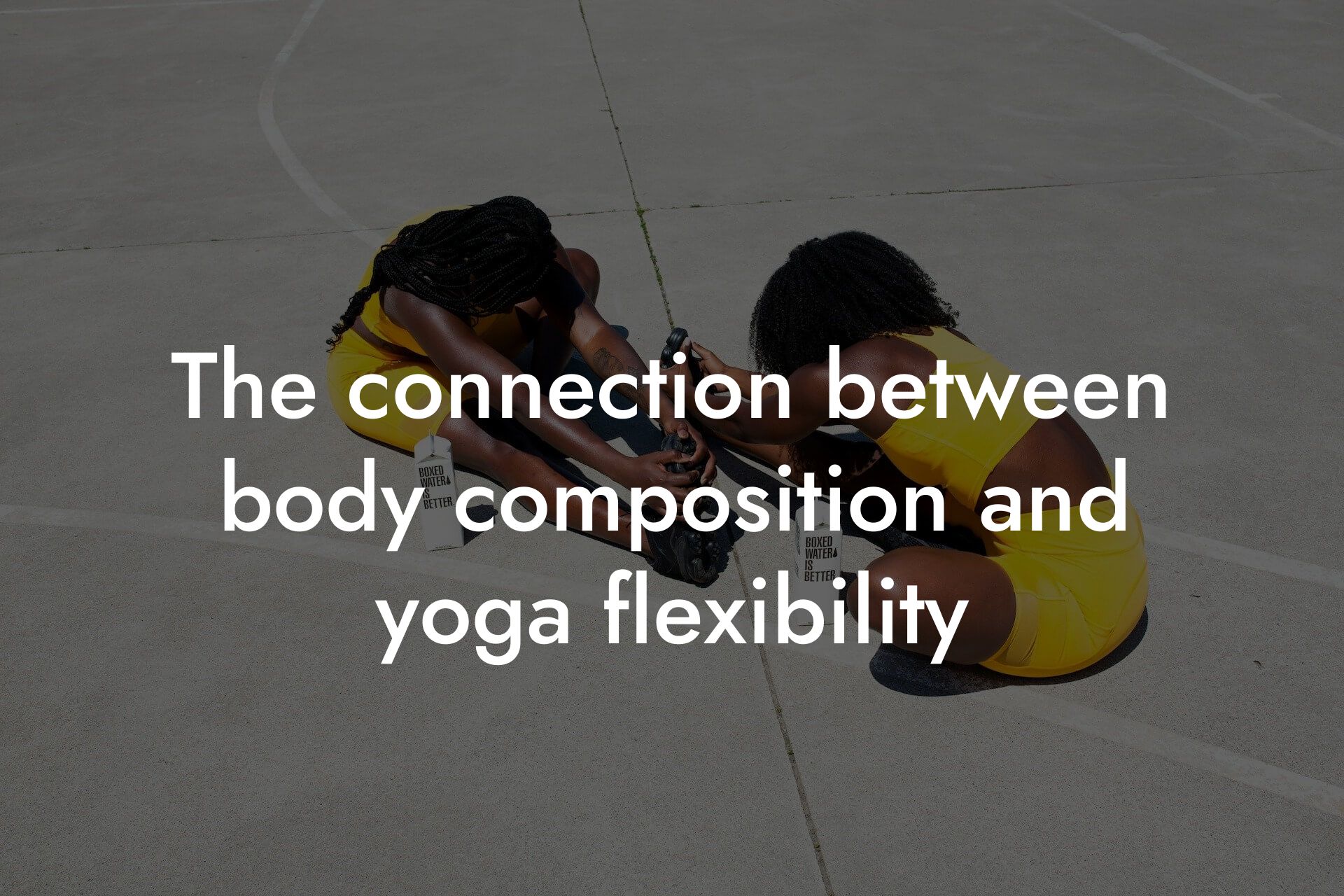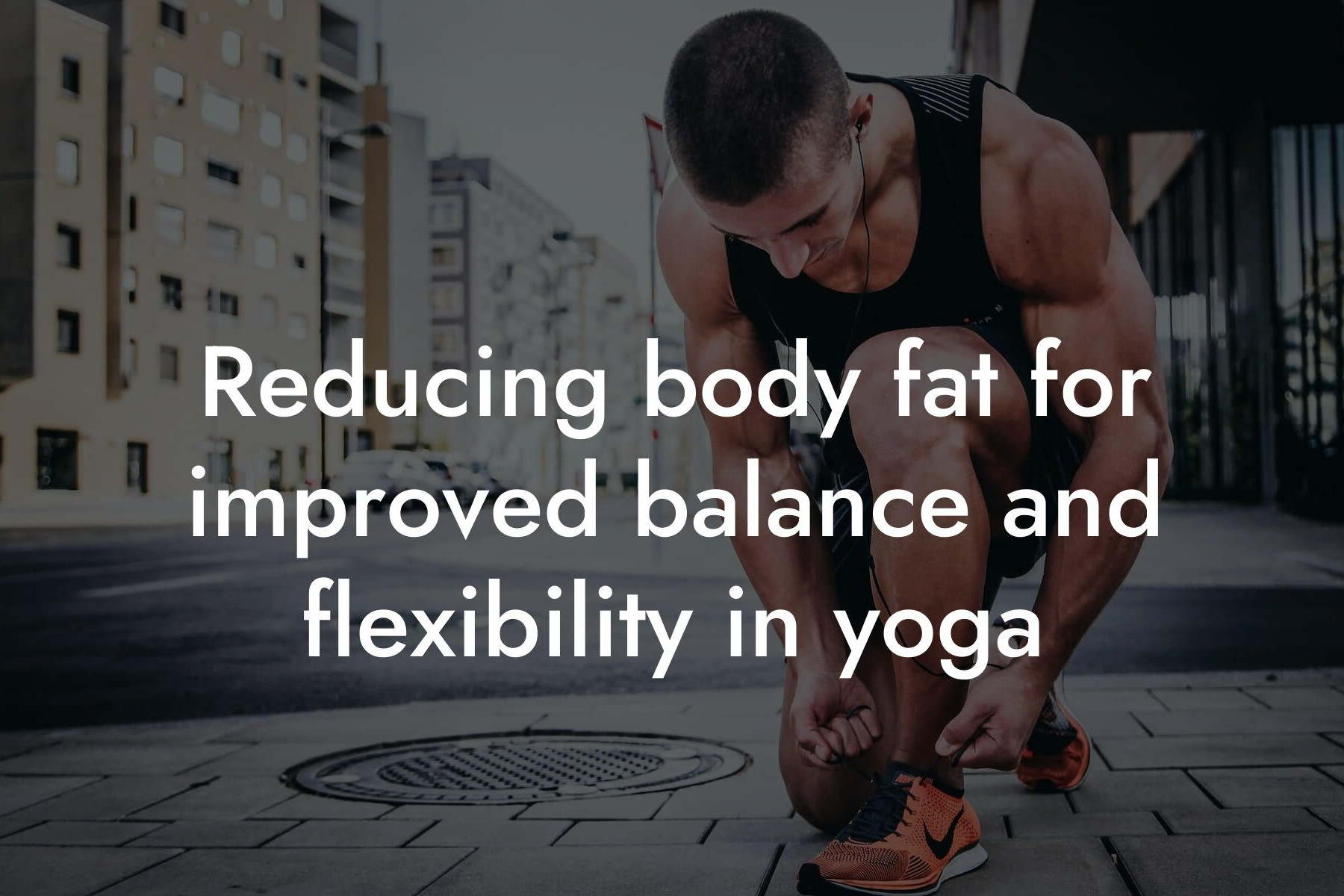As high-earning professionals, taking care of your physical appearance and overall health is crucial for maintaining peak performance in your career. At Tano Performance Group, we understand the importance of staying on top of your game, which is why we're excited to share with you the benefits of incorporating yoga into your fitness routine for injury prevention and recovery.
Table of Contents
The Importance of Injury Prevention
As professionals, you're no strangers to pushing yourselves to the limit. Whether it's long hours at the office, intense workouts, or high-stress situations, your bodies take a beating. Injuries can be a major setback, not only affecting your physical performance but also your mental well-being and overall productivity. According to the National Institute of Arthritis and Musculoskeletal and Skin Diseases, musculoskeletal disorders account for nearly 30% of all workplace injuries and illnesses. This is where yoga comes in – a low-impact, holistic practice that can help prevent injuries and keep you performing at your best.
How Yoga Prevents Injuries
Yoga is a powerful tool for injury prevention due to its focus on strength, flexibility, balance, and body awareness. By incorporating yoga into your routine, you can:
• Improve flexibility and range of motion, reducing the risk of strains and sprains
• Strengthen core muscles, enhancing stability and balance
• Increase proprioception (body awareness), allowing you to better navigate your surroundings and avoid accidents
• Enhance joint mobility and reduce inflammation, decreasing the risk of chronic conditions like arthritis
• Develop greater body awareness, enabling you to recognize and correct imbalances before they become injuries
The Science Behind Yoga and Injury Prevention
Studies have consistently shown that yoga can have a significant impact on injury prevention. A 2016 study published in the Journal of Science and Medicine in Sport found that yoga reduced the risk of injury in athletes by 30%. Another study published in the Journal of Orthopaedic and Sports Physical Therapy in 2018 found that yoga improved functional movement patterns and reduced the risk of injury in individuals with chronic ankle instability.
Yoga for Injury Recovery
While yoga is an excellent tool for injury prevention, it's also a valuable asset in the recovery process. When you're injured, it's essential to maintain a balance between rest and gentle movement to promote healing. Yoga can help you:
• Maintain flexibility and range of motion, reducing stiffness and promoting healthy scar tissue formation
• Strengthen surrounding muscles, supporting the injured area and promoting stability
• Improve circulation, reducing inflammation and promoting healing
• Enhance mental focus and reduce stress, promoting a faster recovery
Yoga Styles for Injury Prevention and Recovery
Not all yoga styles are created equal when it comes to injury prevention and recovery. Some styles, such as:
• Hatha Yoga: Focuses on physical postures (asanas) and breathing techniques (pranayama), making it an excellent choice for building strength, flexibility, and body awareness.
• Vinyasa Yoga: Emphasizes flowing movements and dynamic sequencing, helping to improve flexibility, balance, and cardiovascular health.
• Restorative Yoga: Involves using props to support the body in relaxing postures, promoting relaxation, reducing inflammation, and enhancing recovery.
• Yin Yoga: Targets the deeper tissues of the body, such as connective tissues, to improve flexibility and reduce inflammation.
Creating a Yoga Practice for Injury Prevention and Recovery
When creating a yoga practice for injury prevention and recovery, it's essential to:
• Start slow and gentle, gradually increasing intensity and duration as you progress
• Focus on proper alignment and technique to avoid exacerbating existing injuries or creating new ones
• Listen to your body and modify or rest when needed
• Incorporate a mix of styles and techniques to keep your practice engaging and prevent plateaus
• Work with a qualified yoga instructor or healthcare professional to develop a personalized practice tailored to your specific needs and goals
As high-earning professionals, taking care of your physical health is crucial for maintaining peak performance in your career. By incorporating yoga into your fitness routine, you can prevent injuries, enhance recovery, and improve overall well-being. At Tano Performance Group, we're committed to providing you with the tools and resources you need to take your body – and business – to the next level. Contact us today to learn more about our comprehensive body assessment services and how we can help you achieve your goals.
Final Thoughts
Remember, yoga is not a one-size-fits-all solution. It's essential to approach your practice with patience, persistence, and self-awareness. By doing so, you'll be able to harness the full benefits of yoga and take your physical performance to new heights. So why wait? Start your yoga journey today and discover the transformative power of this ancient practice for yourself.
Frequently Asked Questions
What is the main purpose of yoga in injury prevention and recovery?
Yoga plays a crucial role in injury prevention and recovery by increasing flexibility, strength, balance, and body awareness. It also helps to reduce muscle tension, improve posture, and enhance overall physical function. By incorporating yoga into your fitness routine, you can reduce your risk of injury and accelerate your recovery process.
How does yoga help in injury prevention?
Yoga helps in injury prevention by identifying and addressing underlying imbalances and weaknesses in the body. It improves flexibility, strength, and range of motion, which reduces the risk of injury. Yoga also enhances proprioception (body awareness), allowing you to better sense your body's position and movement, reducing the likelihood of injury.
Can yoga help with chronic pain management?
Yes, yoga can be an effective tool in managing chronic pain. By releasing tension, improving flexibility, and strengthening the muscles, yoga can help reduce pain and discomfort. Additionally, yoga's focus on breathing and relaxation techniques can help reduce stress and anxiety, which are often associated with chronic pain.
What are the benefits of yoga for athletes?
Yoga offers numerous benefits for athletes, including improved flexibility, strength, balance, and coordination. It also enhances body awareness, reduces muscle tension, and improves recovery time. Additionally, yoga can help athletes develop greater mental focus, discipline, and concentration, leading to improved performance.
How does yoga improve flexibility and range of motion?
Yoga improves flexibility and range of motion by increasing the length and elasticity of the muscles and connective tissue. Regular yoga practice helps to break down adhesions and scar tissue, allowing for greater mobility and flexibility. Additionally, yoga's focus on holding poses and breathing techniques helps to relax the muscles, further increasing flexibility and range of motion.
Can yoga help with stress and anxiety?
Yes, yoga is an excellent way to manage stress and anxiety. The physical postures, breathing techniques, and meditation practices in yoga help to calm the mind and body, reducing feelings of stress and anxiety. Regular yoga practice can also improve mood, reduce symptoms of depression, and enhance overall mental well-being.
What is the difference between yoga and stretching?
While both yoga and stretching involve lengthening the muscles, yoga is a more holistic practice that combines physical postures, breathing techniques, and meditation to promote physical, mental, and emotional well-being. Stretching, on the other hand, is a more isolated practice that focuses solely on increasing flexibility and range of motion.
Can yoga help with injury recovery?
Yes, yoga can be a valuable tool in injury recovery. By improving flexibility, strength, and range of motion, yoga can help accelerate the healing process and reduce the risk of re-injury. Additionally, yoga's focus on relaxation and breathing techniques can help reduce pain and discomfort, promoting a faster and more successful recovery.
How often should I practice yoga to see benefits?
The frequency of yoga practice depends on your individual goals and needs. For general health and wellness, practicing yoga 2-3 times per week can be beneficial. For athletes or individuals looking to improve performance, practicing yoga 3-4 times per week may be more effective. It's essential to listen to your body and adjust your practice accordingly.
What are the benefits of yoga for bone density?
Yoga can be beneficial for bone density by improving balance, strength, and flexibility. Weight-bearing yoga postures, such as those that involve standing or balancing, can help stimulate bone growth and density. Additionally, yoga's focus on proper alignment and body mechanics can help reduce the risk of osteoporosis and fractures.
Can yoga help with body composition?
Yes, yoga can help with body composition by improving muscle tone, increasing metabolism, and enhancing overall physical function. While yoga may not be as intense as other forms of exercise, it can be an effective way to burn calories, build strength, and improve body composition.
What is the best type of yoga for injury prevention and recovery?
The best type of yoga for injury prevention and recovery is often dependent on the individual's specific needs and goals. However, Hatha, Vinyasa, and Restorative yoga are often recommended for injury prevention and recovery due to their focus on gentle, therapeutic movements and relaxation techniques.
Can yoga help with posture and alignment?
Yes, yoga can be incredibly beneficial for improving posture and alignment. By strengthening the core and improving flexibility, yoga can help correct postural imbalances and reduce the risk of injury. Additionally, yoga's focus on proper alignment and body mechanics can help improve overall physical function and reduce discomfort.
How does yoga improve balance and coordination?
Yoga improves balance and coordination by challenging the body's proprioceptive system (body awareness). By practicing balance poses and movements, yoga helps to improve the body's ability to sense its position and movement, reducing the risk of falls and injuries.
Can yoga help with muscle imbalances?
Yes, yoga can help identify and address muscle imbalances by strengthening weak muscles and stretching tight ones. By improving muscle balance, yoga can help reduce the risk of injury and improve overall physical function.
What are the benefits of yoga for high-intensity athletes?
Yoga can be incredibly beneficial for high-intensity athletes by improving flexibility, strength, and recovery time. Yoga can also help reduce muscle tension, improve body awareness, and enhance overall physical function, leading to improved performance and reduced risk of injury.
Can yoga help with sleep quality?
Yes, yoga can help improve sleep quality by reducing stress and anxiety, promoting relaxation, and regulating the body's circadian rhythms. Regular yoga practice can help improve the quality of sleep, leading to better rest and recovery.
How does yoga improve mental focus and concentration?
Yoga improves mental focus and concentration by training the mind to stay present and focused. Through meditation and breathing techniques, yoga helps to calm the mind, reducing distractions and improving mental clarity.
Can yoga help with weight loss?
Yes, yoga can be a helpful tool in weight loss by improving metabolism, building strength, and enhancing overall physical function. While yoga may not be as intense as other forms of exercise, it can be an effective way to burn calories and improve body composition.
What are the benefits of yoga for seniors?
Yoga can be incredibly beneficial for seniors by improving flexibility, balance, strength, and overall physical function. Yoga can also help reduce the risk of falls, improve bone density, and enhance overall health and well-being.
Can yoga help with menstrual health?
Yes, yoga can help with menstrual health by reducing symptoms of PMS, improving mood, and enhancing overall physical and emotional well-being. Yoga's focus on relaxation and breathing techniques can also help reduce menstrual cramps and discomfort.
How does yoga improve overall physical function?
Yoga improves overall physical function by enhancing flexibility, strength, balance, and coordination. It also improves body awareness, reduces muscle tension, and promotes relaxation, leading to better overall physical function and reduced risk of injury.
Can yoga be modified for different fitness levels?
Yes, yoga can be modified to accommodate different fitness levels. Whether you're a beginner or an experienced athlete, yoga can be adapted to meet your individual needs and goals. It's essential to listen to your body and adjust your practice accordingly.
What are the benefits of yoga for stress relief?
Yoga is an excellent way to manage stress and anxiety by promoting relaxation, reducing muscle tension, and improving mood. Regular yoga practice can help reduce symptoms of stress and anxiety, leading to improved overall mental and emotional well-being.
Here are some related articles you might love...
- The connection between body composition and yoga flexibility
- Strength training tips to complement your yoga practice
- Reducing body fat for improved balance and flexibility in yoga
- Nutrition strategies for sustained energy in yoga practice
- How DEXA scans can benefit yoga enthusiasts
- Bone density and its impact on yoga practice
- Maintaining muscle tone and flexibility with yoga
- Balancing strength, flexibility, and mindfulness in yoga
- Recovery techniques for yogis after intense sessions
Zak Faulkner
Zak Faulkner is a leading authority in the realm of physical health and body composition analysis, with over 15 years of experience helping professionals optimise their fitness and well-being. As one the experts behind Tano Performance Group, Zak has dedicated his career to providing in-depth, science-backed insights that empower clients to elevate their physical performance and overall health.
With extensive knowledge of DEXA technology, Zak specializes in delivering comprehensive body assessments that offer precise data on body fat, muscle mass, bone density, and overall physique. His expertise enables individuals to make informed decisions and achieve their fitness goals with accuracy and confidence. Zak’s approach is rooted in a deep understanding of human physiology, combined with a passion for helping clients unlock their full potential through personalised strategies.
Over the years, Zak has earned a reputation for his commitment to excellence, precision, and client-focused service. His guidance is trusted by top professionals who demand the best when it comes to their health. Whether advising on fitness programs, nutritional strategies, or long-term wellness plans, Zak Faulkner’s insights are a valuable resource for anyone serious about taking their health and fitness to the next level.
At Tano Performance Group, Zak continues to lead our Content Team revolutionising how professionals approach their physical health, offering unparalleled expertise that drives real results.




